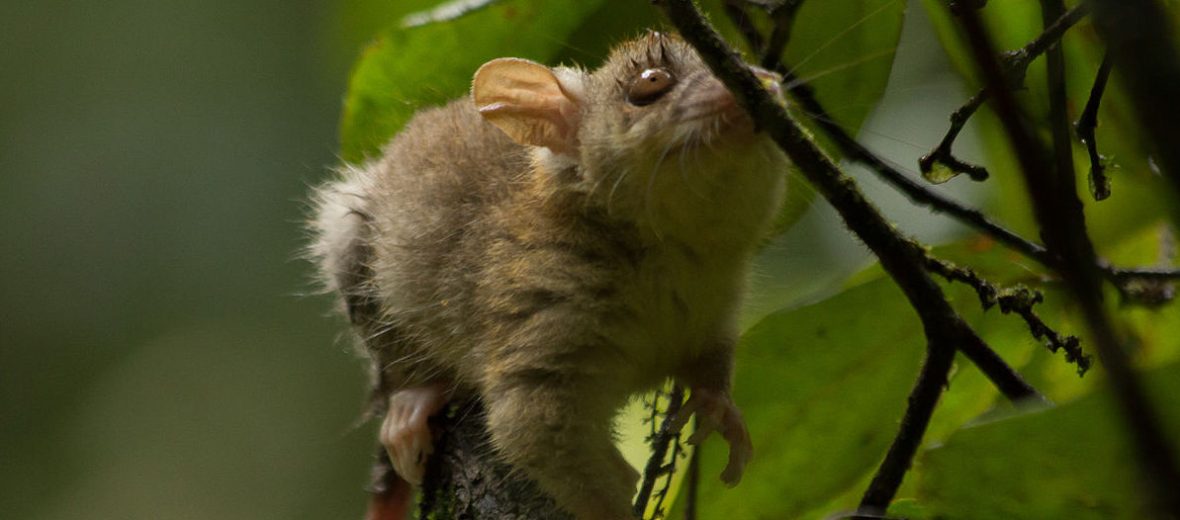
The bare-tailed woolly opossum, aka white-eared opossum, can be found in South America. They prefer rainforests, subtropical forests, secondary forests, and plantations with thick plant cover. These marsupials have a wide distribution, but 1 that is decreasing. This is due to habitat loss and destruction at the hands of deforestation which is directly caused by the logging industry and residential and commercial developments. But for now they are listed as Least Concern by the IUCN.
First the Stats…
Scientific name: Caluromys philander
Weight: Up to 11 ounces
Length: Up to 10.24 inches, plus up to a 15.94 inch tail
Lifespan: Up to 6.3 years
Now on to the Facts!
1.) In 1758, these critters were first described by Swedish zoologist and historian Carl Linnaeus.
2.) These opossums are like many others in that they are nocturnal (active at night).
3.) They are also called zarigüeya lanuda parda in Spanish, mucura-xixica in Portuguese, and wakaro in the Kwaza language of Rondônia.
4.) Males tend to be affected by the availability of moonlight – they are less active with more moonlight. While females are unaffected by it.
5.) Bare-tailed woolly opossums are arboreal (spend their lives in trees).
But wait, there’s more on the bare-tailed woolly opossum!
6.) These solitary critters are typically very aggressive towards each other. When they meet, they will growl, hiss, and grunt. Sometimes fights break out.
7.) They also don’t take kindly to being held and will typically, readily fight capture and bite.
Did you know…?
The Acanthocephalan intestinal parasite Gigantorhynchus lutzi is often found in these opossums. This parasite can cause partial obstructions of the intestinal tract, severe lesions of the intestinal wall, and can even lead to death.
8.) Bare-tailed woolly opossums feast on vegetables, fruits, gums, nectar, small birds, amphibians, and reptiles.
9.) Females produce up to 3 litters a year, based on the availability of food.
10.) The gestation (pregnancy) of females is just 24 days and yields up to 7 joeys.
Now a Short Bare-Tailed Woolly Opossum Video!
Be sure to share & comment below! Also, check out the Critter Science YouTube channel. Videos added regularly!
Want to suggest a critter for me to write about? Let me know here.
Some source material acquired from: Wikipedia & IUCN



